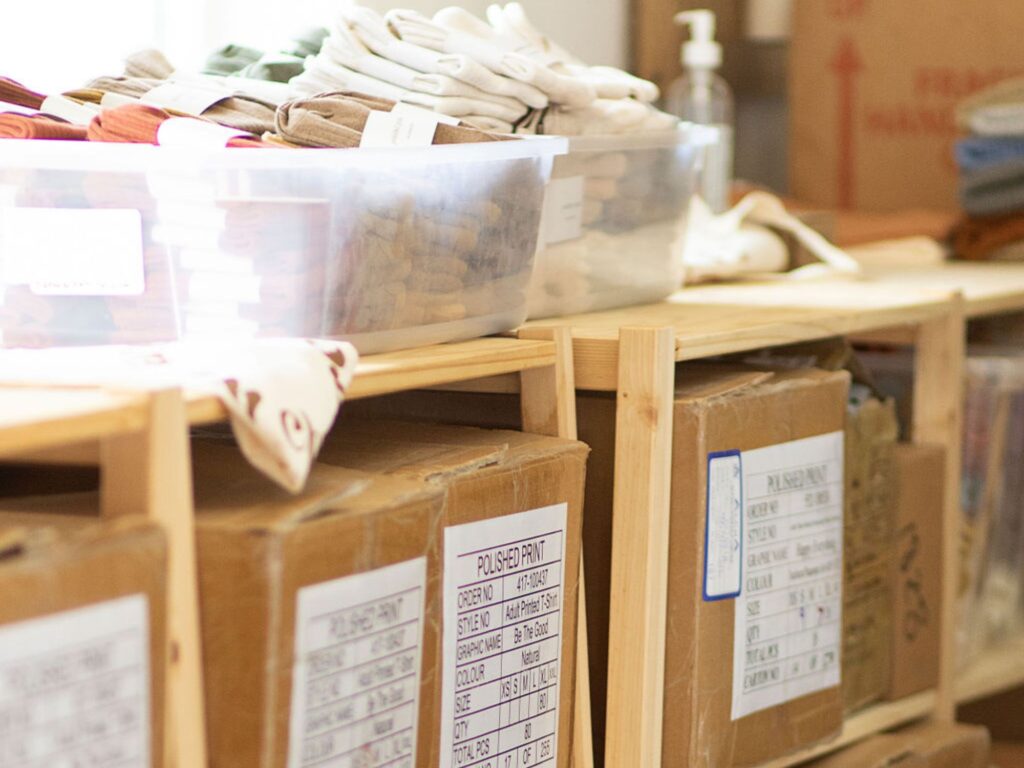
Inventory management is a major part of the core to handmade business administration and management. A lot of the time common inventory management mistakes discovered after it’s too late. This can be problematic, because your inventory doesn’t just impact your customer relations and customer service. It also has a direct influence on your business’s bottom line. Inventory management forms an essential part of your supply chain management. Which is why it’s imperative to be wary of mistakes you can make as a small business owner.
Far too many small businesses still make fundamental mistakes that unnecessarily compromise their resources. This is important even if you have been doing the inventory for your small business for many years. It is always good to be aware of these errors. Understanding if you are making mistakes can be the first step to take before they become real problems. Avoiding these common mistakes regularly can help you become a total master in inventory management
Let’s discuss what are the top 5 most common mistakes that stand in the way of successful inventory management. Plus, how to avoid these mistakes.
Relying on Inventory Spreadsheets

For a long time, spreadsheets were the gold standard when it came to effective inventory management. Spreadsheets were reliable, flexible, and could be used by almost any type of business. Today, thanks to the advanced technology available, spreadsheets have been outclassed by inventory management software. These are more reliable, flexible, and specifically designed for the job.
If you’re still relying on spreadsheets, you’re falling behind. Not to mention, wasting the valuable time you have as a small business owner. As spreadsheets and all manual, and inventory tracking systems are mostly automated. Such as our inventory tracking system for small businesses, Inventora.
If you’re still using spreadsheets or other manual input methods for inventory tracking, then you’re sacrificing time, money, and efficiency. Plus, this is a mistake that can lead to other larger mistakes for your handmade business. If you opt out of using automated inventory management features, you’ll see more errors in your inventory data. More than someone who uses an inventory management system. Studies have shown that automated management is proven to be 95% more accurate and cost-efficient for business owners.
A Lack of Inventory Management Performance Standards

If you don’t have clear standards for tracking your inventory, it is hard to see where are you having problems. It is good to be able to spot where you have an issue. However, it is way better to know the ideal standard that you want to always keep in place. This way you’ll have metrics to keep track of. Plus, obtain better organizational practices, and be more efficient with your time and energy output.
Automated inventory tracking systems for small businesses are designed to give you back the time and money. The valuable things you’ve put into your business by streamlining it. The best way to avoid inventory keeping mistakes, is to have key indicators. These indicators will show products aren’t selling. As well as which products are expired, the percentage of occupancy of your warehouse, inventory movement, and more.
First you’ll need to determine the key inventory indicators that are important to your small business. This makes it easier for you to track metrics. These metrics will show you whether your inventory management is performing as you would like it to. Or if there is something you need to adjust.
Over-ordering/overselling Your Inventory

Over-ordering or overselling is the one of the common inventory management mistakes. If you don’t have good control of your inventory management, this can happen very often. It is hard to know exactly the quantities that you need to have in stock when your business is growing. As a small business owner, you can have the tendency to over-order supplies. Or oversell products that you actually don’t have available on your shelves.
On the other hand, you can have a product that hasn’t been selling well that you’ve overlooked. Now there will be too many units untouched and unmoving in your inventory. You’ve over-ordered!
Here are two distinct scenarios and mistakes that both come from the same core issue; a lack of foresight.
Loss of cash flow: Loss of cash flow is one of the top reasons small businesses fail. There is no reason to pay for and hold onto the stock you don’t need in the near future. The less products you have to stock, the more cash you have to invest in other areas of your business. Such as, marketing.
Wasted storage space: Save your storage space for products and supplies you only really need. Anything unused or discontinued in your inventory, will now only be causing clutter to your space.
Items that go bad or expire: Over-ordering items that don’t last forever is a large waste of space. Plus, a total waste of money. If the materials and supplies you use have an expiration date, it’s essential for you to sell before expiration. If you’re noticing a continuation of this problem occurring within your handmade business, then it’s vital to assess. Start where you went wrong within your inventory management.
Wasted time: All that time you spend ordering, receiving, and stocking your products and supplies can be better spent. This time can be used to complete literally any other tasks for your small business. Nothing is worse than realizing you’ve wasted time that could have been essential production or rest time for you.
Other things to consider here are:
Sales history: Include the number of sales and how long they took to sell. This will allow you to successfully manage your inventory. This information can also be used to work out an estimate of the stock coverage. Stock coverage is the amount of time you can continue to sell items based on history and the amount of inventory you currently have.
Supplier lead time: This is the time it takes from the customer placing an order, to the time it’s delivered. By accurately using an inventory tracking system like Inventora, you can see your stock change the moment something sells. Thus, now being able to shorten the wait time customers have between ordering and receiving their products.
Minimum Order Quantity (MOQ): You should know the minimum quantity of items that you can order from a supplier. As this will effect how quickly you can get more supplies and materials to make your handmade products. Thus, effecting your production and completion time.
Inventory carrying cost: This is the total expenses related to storing unsold goods. This is very important to know when evaluating where you are losing money within your small business. Plus, how to spot which items are causing a cluster of space within your storage.
The solution to this mistake is very easy. Start using an automated system, such as Inventora. You will gain a clear picture of all inventory updates. Be able to see tracking of your supply orders, and receive stock level alerts. While also detecting your best selling products. Inventora will help you to order what you need when you really need it. So, you don’t have to overspend and over-order. Rather, you will know to order when the time is right. Plus, avoid spending valuable finances for your small business.
Inventory Management Irregularities

As a handmade business owner, you need to account for your inventory on a regular basis. It’s important to carefully track the flow of your products and raw materials. It’s likely that you have some procedures that you already follow in order to do this. Sometimes we can be occupied in the production of your products, sending orders, or creating content for social media. This can make you can lose track of managing your inventory regularly.
Once this happens, you will begin to see irregularities within your inventory and other internal aspects of your business. This is often only done when the situation is desperate and you feel a sense of frantic urgency.
A useful tip to avoid this mistake is to include more frequent checks and balances to keep things consistent. Create a strategy that can work for your business in order to have an inventory management protocol.
Not Conducting an Occasional Inventory Process Audit

Internal audits are not fun. However, they are totally necessary. Many small businesses have no idea how unproductive and unprofitable many of the processes they have in place are. Regular audits will help you stick to the processes you’ve set in place for a reason.
An internal audit will also present a good opportunity to see what is working and what is not. These audits bring to light the weak spots of small businesses. The spots that waste your businesses time and money every single day. Sometimes we focus on processes that are not creating a positive impact to our business. We do this instead of focusing on the things that can help us be one step ahead.
By creating time to conduct occasional inventory audits, you may learn a couple of things about how your business runs. Or you may learn things that you really want to change. Inventory audits will help you to keep track of inventory levels and movement of the products and production.
Protip: Inventora is one of the only inventory softwares for handmade businesses that not only tracks the movement of your finished products, but the quantity of the materials it takes you to create those products.
Regularly administering auditing into your business will also help identify inventory problems and develop solutions for them. We recommend implementing audits every quarter of the year. You can easily use the audit feature that Inventora has to complete this task with ease. With Inventora, you’re able to see everything that you are supposed to have in stock. Plus, be able to correct any errors that arise.
Where to Get Started Organizing Your Inventory

Inventory Management is an active process. Eliminating inventory management mistakes adds value through streamlined warehouse management and enhanced customer order accuracy. There are systems in place that can help you automate this process. This ensures valuable time back to you while creating efficiency around your business.
Your small business will be changing over the time and technology will be too. It will be hard to be 100% satisfied with something when everything is evolving over and over again. However, If you maintain the mindset that this is a larger experiment, then you’ll be much more likely to adapt. The new adaption will favor your business’s chances of long-term survival. At the very least, you’ll have fewer inventory management headaches.
You can easily get started automating your inventory and streamlining your business today for free with Inventora. Inventora’s mission is to simplify and streamlines business operations for makers and manufacturers. Because inventory shouldn’t be hard. We’ve designed Inventora to be as user-friendly as possible. Without sacrificing powerful features, you can fix the common inventory management mistakes.
Inventora’s Key Features to Automate Inventory
Materials & Products: Inventory is more than just the products that you sell. Track materials and supplies, as well as finished products through Inventora.
Auto Calculation: Inventora stands above the rest with our product to materials connection. When you make products, your materials used will automatically be deducted.
Simple Auditing: Our built-in inventory audit feature allows you to easily stay on top of any miscounted stock levels. You can even set up alerts so nothing gets overlooked.
Inventory Reports:T he creators of Inventora are handmade business owners themselves. We understand the need of knowing your day-to-day inventory values and much more!
As you can see, the benefits you get from having an inventory management system are notable. You reduce the margin for error, automate processes, plan better with forecasting, track levels, and improve customer satisfaction and loyalty. Whether you’re making soap, handbags, candles, or even salsa – Inventora is the answer to all your small business inventory management needs.
Inventory management matters and now that you understand why, start small. List the pain points and weaknesses in the process. Document the errors, and start improving while eliminating the common inventory management mistakes. Allow your business to grow the way you want with Inventora.
Get started streamlining your small business operations. Join Inventora for free with our hobby plan. Or join our newsletter below to receive educational hot takes around small business planning.

